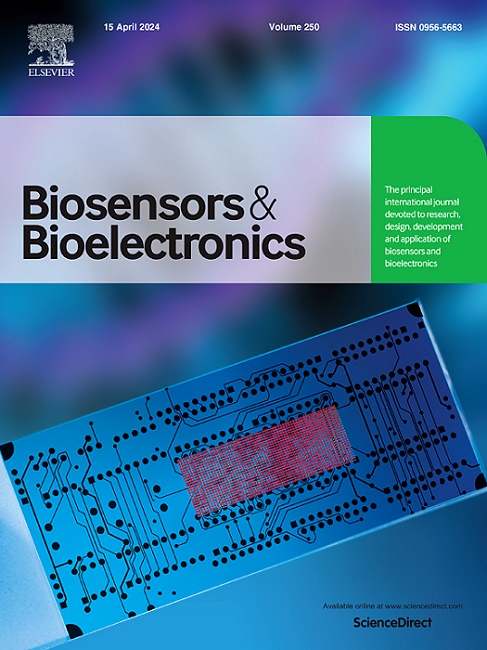Development of a label-free Ca2+ image sensor to visualize extracellular Ca2+ dynamics in the biological samples
IF 10.5
1区 生物学
Q1 BIOPHYSICS
引用次数: 0
Abstract
Calcium ion (Ca2+) regulates various biological functions. Most studies, however, have focused on intracellular Ca2+ (Ca2+i) and its role in cellular responses. Extracellular Ca2+ ion (Ca2+o) also plays a crucial role in physiology serving as a key ion pool for entry into cells through various plasma membrane channels. Changes in Ca2+o occur under both physiological and pathological conditions and can influence biological responses. Despite its importance, Ca2+o has received little attention due to the lack of easy-to-use imaging devices. Here, we show the development of a label-free Ca2+ image sensor (CIS) for monitoring Ca2+o. The CIS was developed by fabricating a charge transfer type CMOS image sensor with Ca2+-selective membrane and is highly selective for Ca2+o without detecting other ions. We used CIS to monitor glutamate-induced Ca2+o changes in the whole hippocampal slices. CIS detected different spatiotemporal patterns of Ca2+o decrease across the hippocampal slice, with the largest decrease at the CA1 pyramidal cell layer. This Ca2+o decrease was inhibited by the NMDA receptor antagonist but not by AMPA receptor antagonist and was mimicked by NMDA suggesting that Ca2+ entry into neurons through NMDA receptors decreases Ca2+o. These results show that the CIS is a valuable tool for analyzing spatiotemporal dynamics of Ca2+o in normal physiology and pathological states and has tremendous potential for elucidating the biological function of Ca2+o.
开发无标签的Ca2+图像传感器,以可视化生物样品中的细胞外Ca2+动态
钙离子(Ca2+)调节多种生物功能。然而,大多数研究都集中在细胞内Ca2+ (Ca2+i)及其在细胞反应中的作用。细胞外Ca2+离子(Ca2+o)在生理上也起着至关重要的作用,作为通过各种质膜通道进入细胞的关键离子池。Ca2+o的变化发生在生理和病理条件下,并可以影响生物反应。尽管Ca2+o很重要,但由于缺乏易于使用的成像设备,Ca2+o很少受到关注。在这里,我们展示了一种用于监测Ca2+o的无标签Ca2+图像传感器(CIS)的开发。CIS是通过制造带有Ca2+选择性膜的电荷转移型CMOS图像传感器而开发的,并且对Ca2+o具有高度选择性,而不检测其他离子。我们使用CIS监测整个海马切片中谷氨酸诱导的Ca2+o变化。CIS检测到不同时空模式的海马片Ca2+o下降,其中CA1锥体细胞层下降最大。这种Ca2+o的减少被NMDA受体拮抗剂抑制,而不被AMPA受体拮抗剂抑制,并被NMDA模拟,表明Ca2+通过NMDA受体进入神经元减少Ca2+o。这些结果表明,CIS是分析Ca2+o在正常生理和病理状态下的时空动态的有价值的工具,并且在阐明Ca2+o的生物学功能方面具有巨大的潜力。
本文章由计算机程序翻译,如有差异,请以英文原文为准。
求助全文
约1分钟内获得全文
求助全文
来源期刊

Biosensors and Bioelectronics
工程技术-电化学
CiteScore
20.80
自引率
7.10%
发文量
1006
审稿时长
29 days
期刊介绍:
Biosensors & Bioelectronics, along with its open access companion journal Biosensors & Bioelectronics: X, is the leading international publication in the field of biosensors and bioelectronics. It covers research, design, development, and application of biosensors, which are analytical devices incorporating biological materials with physicochemical transducers. These devices, including sensors, DNA chips, electronic noses, and lab-on-a-chip, produce digital signals proportional to specific analytes. Examples include immunosensors and enzyme-based biosensors, applied in various fields such as medicine, environmental monitoring, and food industry. The journal also focuses on molecular and supramolecular structures for enhancing device performance.
 求助内容:
求助内容: 应助结果提醒方式:
应助结果提醒方式:


